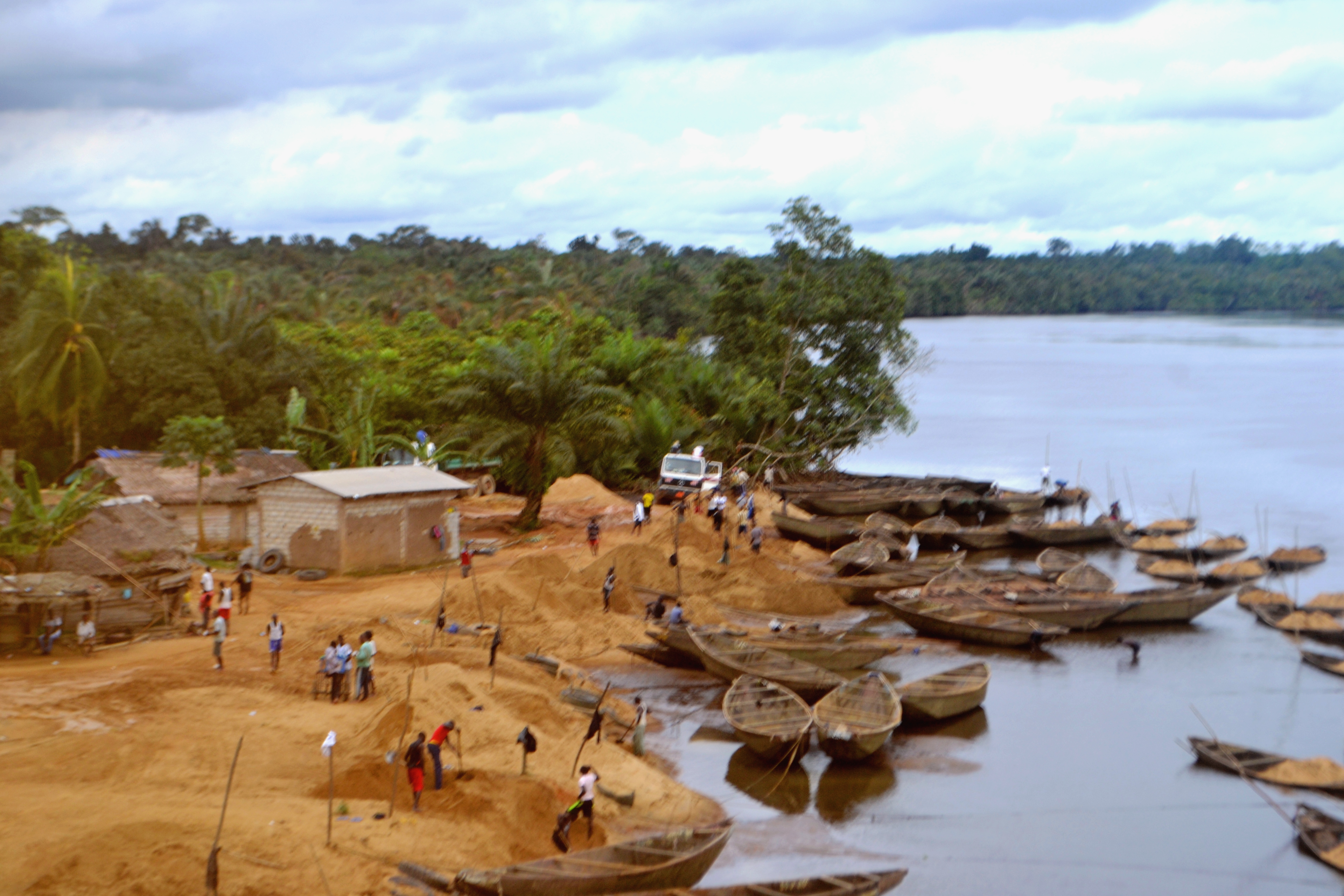Dibamba River on:
[Wikipedia]
[Google]
[Amazon]
 The Dibamba River is in the Littoral Region of southern
The Dibamba River is in the Littoral Region of southern

Cameroon
Cameroon (; french: Cameroun, ff, Kamerun), officially the Republic of Cameroon (french: République du Cameroun, links=no), is a country in west-central Africa. It is bordered by Nigeria to the west and north; Chad to the northeast; the C ...
, emptying into the Cameroon estuary near the city of Doula
A doula () is a trained professional who provides expert guidance for the service of others and who supports another person (the doula's client) through a significant health-related experience, such as childbirth, miscarriage, induced abortion o ...
.
Location
The Dibamba river has a length of and a catchment area of . Average discharge at the river mouth is 480 cubic meters per second. At its mouth, the river is tidal, and flows into the estuary through mangrove forests that extend south from Doualla to Point Souelaba. Near Douala, the river is crossed by a T-section girder road bridge built of precast, prestressed concrete in 1983–1984.
History
TheDuala people
The Duala (or Sawa) are a Bantu ethnic group of Cameroon. They primarily inhabit the littoral and southwest region of Cameroon and form a portion of the Sawabantu or "coastal people" of Cameroon. The Dualas readily welcomed German and French co ...
, who today inhabit the region in and around the city of Douala, moved to their present-day location from Piti
Piti may refer to:
* Pīti, a mental factor in Buddhism
* PITI, the principal, interest, taxes, and insurance sum of a mortgage payment
* Piti (food), a soup dish of Central Asia
* Piti (footballer) (born 1981), Spanish footballer
* Piti, Guam
* Pi ...
on the Dibamba river, displacing Bassa-Bakoko cultivators. Duala traditions say they are descendants of Mbedi, son of Mbongo, who lived in Piti.
Monneba was a Duala leader on the Cameroon coast in the 1630s, engaged in trading in ivory and slaves with the Europeans.
Dutch maps from the 1650s place Monneba's name on the Dibamba River, which is called Monneba's Creek or Channel (Monnebasa Gat).
The Dibamba was the scene of naval hostilities during World War I
World War I (28 July 1914 11 November 1918), often abbreviated as WWI, was one of the deadliest global conflicts in history. Belligerents included much of Europe, the Russian Empire, the United States, and the Ottoman Empire, with fightin ...
, when Commander Ralph Stuart Sneyd engaged and sank a large German launch on 10 September 1914, and drove the enemy out of their post at Piti.
Environmental issues
Douala's Bassa industrial zone ends in the estuarine creek formation of the Dibamba River, discharging pollutants. The wetlands are quickly being colonized by invasive species, and a great number ofphytoplankton
Phytoplankton () are the autotrophic (self-feeding) components of the plankton community and a key part of ocean and freshwater ecosystems. The name comes from the Greek words (), meaning 'plant', and (), meaning 'wanderer' or 'drifter'.
Ph ...
have been identified, some of which are caused by the pollution.
Further inland, there are still some patches of permanent swamp forest on the river, but many others have been cleared and drained for oil palm plantation. The fauna of river are not well protected. The African Manatee (Trichechus senegalensis
The African manatee (''Trichechus senegalensis''), also known as the West African manatee, is a species of manatee that inhabits much of the western region of Africa – from Senegal to Angola. It is the only manatee species to be found in the ...
) is endangered.
References
{{coord, 3.948858, N, 9.762726, E, display=title Rivers of Cameroon